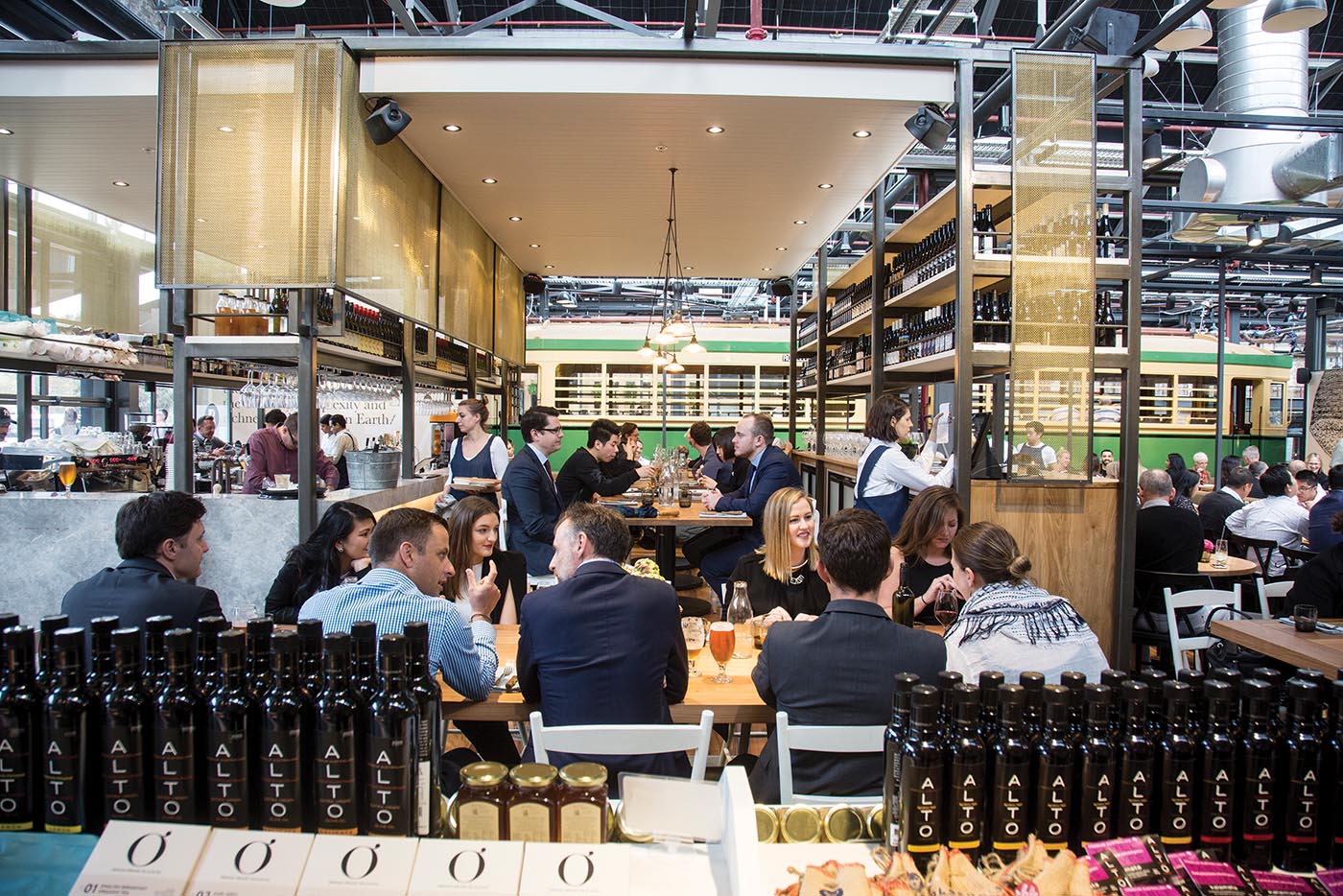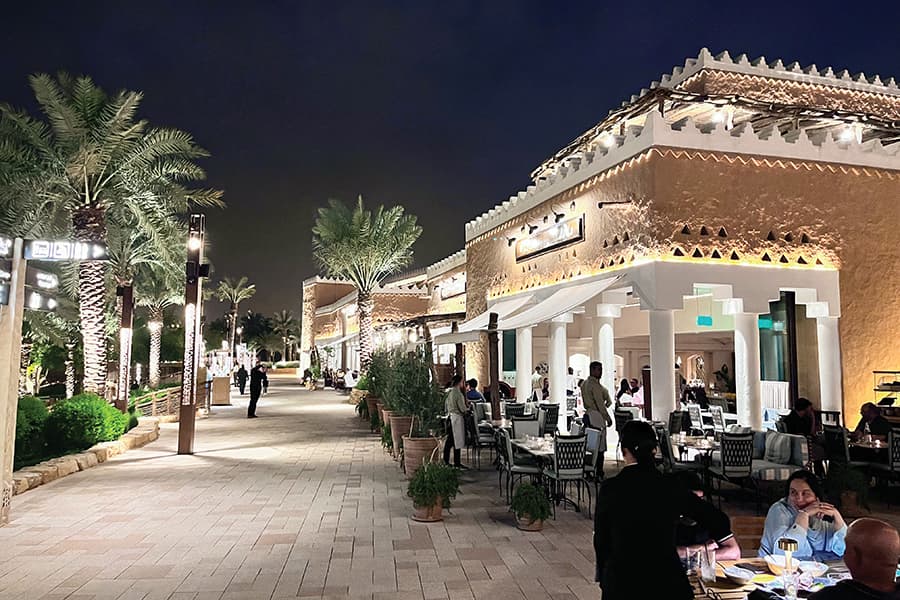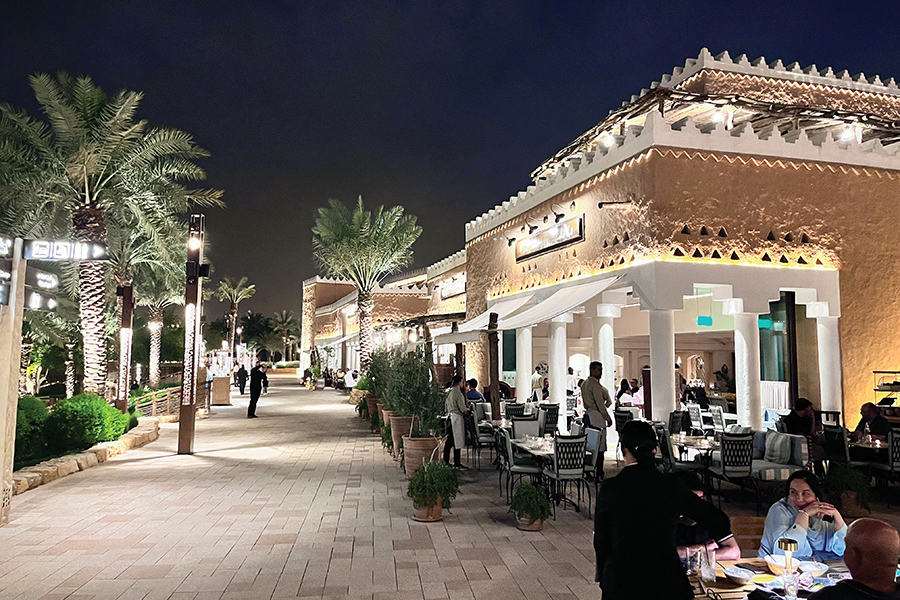The latest census is out and the Brain and Poulter team were eagerly awaiting it. For them, ancestry, income, family composition, religion and a host of other census data play a vital role in the determination of a shopping centre’s F&B response to its trade area.
Like Bernard Salt, our nation’s most popular demographer, the analysts at B&P have been as excited as kids on Christmas Eve awaiting the release of the 2016 Census data. Will the B&P stocking be stuffed with answers from our wish list as to how our ages, ancestry, incomes, family composition, religion and domiciles have changed over the last five years? All of these elements play a vital role in our assessment of trade areas in order to build an appropriate F&B response.
Without census data to help us develop our insights, we would never have been able to drive growth for Mirvac Rhodes through identifying the doubling in workforce population and Asian ancestry that led to specific changes to the F&B tenancy mix, to better appeal to these markets that were being undersupplied. We would have built the tenancy mix for Chinatown in Southport incorrectly if we hadn’t been able to identify that the largest Asian group in this region was actually Korean, not Chinese, and recommend above-average indexing of Korean-focused cuisines. And we might have misconstrued the Tramsheds strategy to be too heavily fresh-food focused if we hadn’t been able to scorecard the census data attributes of the Forest Lodge trade area, showing that food catering needed to be the hero to align best with the psyche of this particular area’s demographics.
Luckily, our team seems very happy with what it’s unwrapped when the data was released on 27 June – there’s been no tantrums, no one wanting to return the data and exchange it for another size or colour. Instead, our guys are all playing happily with their new data and even sharing it with each other, grateful for what they have received. And in the spirit of Christmas, we thought we would re-gift to SCN readers what we are feasting on, census-wise, in the B&P office.
Life is a banquet
Multiculturalism is a driving force in the food and beverage DNA of this great nation. Census 2016 tells us Australia has a higher proportion of overseas-born people (26.3%) than the United Kingdom (13%), United States (14%) and Canada (22%) with New Zealand only slightly below Oz at 23%. What’s more, nearly half of all Australians were either born overseas, or had one or both parents born overseas.
On one hand this is great news for F&B. This global heritage, set in an agriculturally and economically rich country means we can grow, import, sell, cook and eat out on a huge range of culturally sensitive food products and cuisine types. It’s great news for food retail for centres in trade areas with strong European, African or Asian ancestry or immigration, where cooking for large groups at home and a culture of dining inside the home dominates.
It’s great for levels of authenticity in food catering too. Have you ever tried an espresso in Malaysia? Sure doesn’t taste right… but in Lygon Street or Leichhardt, where it is embedded in the population’s heritage, it tastes mighty fine.
The bad news is this varied multiculturalism means there are so many cuisines that can feature that it’s hard for operators to get up a critical mass of outlets, and hence only about 2% of all restaurants in Australia have more than three outlets. This makes scalability hard and is a turn-off for shopping centre leasing agents who need to work harder over a longer period of time to secure suitable tenants.
To help overcome this, B&P has been able to test and measure just what percentage of a trade area’s demographics needs to come from a single country of origin to sustain a specialty food retail outlet (e.g. an Indian grocer) or that needs to originate from a regional area or continent to sustain a whole specialty precinct (think Hawker Centre or Eataly). In this way, leasing can go to market knowing the traction to support will be there and operators will be keen to be involved and able to trade successfully for the term of their lease.
The riches are in the niches
Census 2016 revealed that, as a nation, we are becoming more agnostic than we were five years ago, but it also divulged that some 5% of our national population now follows a religion that dictates certain food restrictions – Halal for Muslims, vegetarian for the Hindu and Buddhists, Kosher for Jews. These populations are rising in number each census period and, if they are overindexed in any trade area, it is an opportunity to respond with a carefully curated food retail and catering mix. Certainly our work has produced evidence on poor performance of ‘dude foods’ like Mexican in trade areas overindexed with Asians, or lack of attraction to lighter cuisines like salads when strong African or Indian ancestry is represented in the trade area. Understanding the dining DNA of differing races is now more important than ever post-Census 2016.
- EIFONI = Eat if on Instagram
- DUFORU = Dude Food Rules
- CAPSACs = Coffee & Pastry, Sit & Chat
- EATWICHY = Eat Where I Can Hear You
- SAPNI = Smashed Avocado, Price No Issue!
It’s easy as A-B-C but it’s all about X-Y-Z
Developing shopping centres for the last 50 years was as easy as A-B-C:
A. Secure a supermarket or two;
B. Secure a department store or DDS;
C. Separate these anchors with a mall of specialty and throw in a food court.
That was back when Australian shoppers were predominantly stay-at-home mums building their great Australian dream in the suburbs and raising the kids. They loved the convenience of a one-stop shop where they could get a car park and negotiate prams along smooth, conditioned pavements called malls and manage a multitude of household chores in a single outing and a single car park.
Have you ever heard Bernard Salt speak about his acronyms to describe the traits of various demographics like the PUMCINS (professional urban middle-class in nice suburbs)? Then you should get a bit of a laugh too from these acronyms we’ve developed from the Census data, using a foodie filter.
Let’s start with Gen Y. Making up about 21% of our population, they are known to us as the SAPNI (pronounced sap-knee): Smashed Avocado, Price No Issue!
This major cohort of working Australians living in the inner suburbs of major cities are high on recent food currencies and driving the revolt from traditional fast food brands to artisan food operations with an interest in provenance and sustainability. Go-to foods include smashed avocado on toast, Sake Jnr for Poke, Nomad for charcoal zucchini flowers with truffle honey.
EIFONI (pronounced i-phone-y): Eat If On Instagram. Say hello to Gen Z, aka the Millennials, where unless it’s on social media it’s not on their radar. They are getting a lot of airtime in terms of the future of retail once this mob are the driving consumer group but, at present, their cohort isn’t as big as Gen X, Y or the Boomers. Go-to foods for these Millenials are gourmet donuts, food trucks, and the highest booze consumption per capita of any generation.
EATWICHY (eat-witch-e): Eat Where I Can Hear You. Poor Baby Boomers – the noise at Mary’s Burgers is too much for their ageing ears, the lighting at Monopole too dim for their ageing eyes. Boomers have worked hard, put the kids through school and uni and now, with the spare cash from downsizing to Harold Park, they are out in force at Tramsheds.
This is our largest demographic cohort and, as boomers retire, they will become the group most able to spend time (but maybe not money) in shopping centres.
So before you turn your old food court into a food truck park with live music and backless chairs, better check if it’s the EATWICHY or the SAPNI tribe who dominate your trade area!
Favourite food haunts for an EATWICHY include Firedoor, Chiswick at the Gallery, No 1 Bent St.
There’s also the DUFORU (duff-oo-roo) – Dude Food Rules/Gen X, the CAPSACs – Coffee & Pastry, Sit & Chat to describe the silent generation, and of course the young Alpha generation we call the FIOHDITO (fee-o-dit-o) – Food In One Hand Device In The Other, but that’s for another issue.
What a cracker!
We hope you’ve enjoyed sharing our census joy and gained some insights into just some of the impacts demographics can have on the planning of food within development. In closing with a Christmas theme, our aim is to make every job a real ‘cracker’ by paying careful attention to the demographics. By following our recipe, clients will always find the proof is in the pudding. Merry Christmas to all, and to all a good night!.
























